![Blue [PRINT], Lily Seika Jones Blue [PRINT], Lily Seika Jones](https://84d70f39dda4f8d63311-09dac41207c435675bfd529a14211b5c.ssl.cf1.rackcdn.com/assets/attachments_p/000/085/197/size300_LilyJ_Blue_WEB.webp)
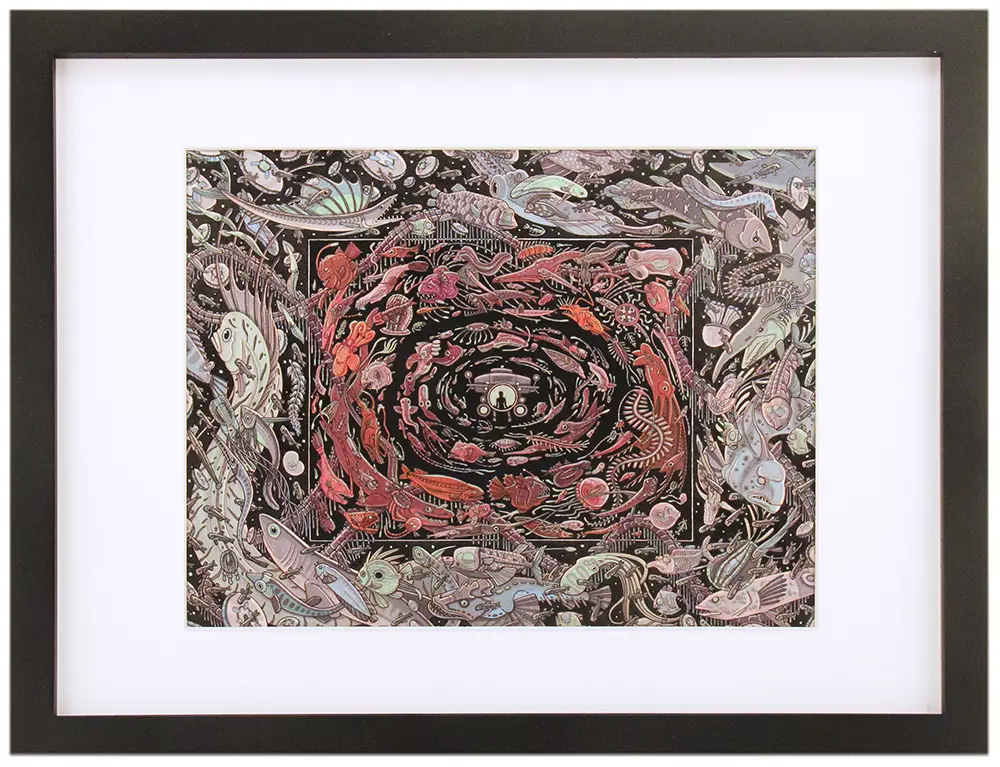
| Artist: | Justine Prebich |
| Exhibition: | Oceans & Currents |
| Art Width: | 10.0" (25.4 cm) |
| Art Height: | 8.0" (20.32 cm) |
| Medium: | Black 3.0 paint, ink, marker, pencil, and glow pigment paint |
| Features: |
Framed
|
| Year: | 2021 |
Scientists have successfully photographed a black hole, landed rovers on Mars, and sent spacecraft to the dark side of the moon. Yet, one of the last unknown frontiers – and one of the most deceptively familiar – is on our very own planet.
More than 80% of the ocean remains unexplored. And because it’s difficult to protect what we don’t know, only about 7% of the world’s oceans are designated as marine protected areas (MPAs).
The largely unexplored, deepest depths of our oceans remain mysterious and extremely difficult to explore. On a dive to the bottom of the Mariana Trench, which is nearly 7 miles deep, the pressure is 1,000 times more pressure than at the surface, equivalent of the weight of 50 jumbo jets pressing on your body.
Ocean exploration technologies have come a long way. Floats and drifters, devices that rely on ocean currents to carry them while they collect data, have been complemented in recent years by an ever-sophisticated fleet of underwater vehicles. This can include human-occupied vehicles (HOVs), remotely-operated ones (ROVs), and autonomous and hybrid ones.
Oceana uses a combination of technologies to explore deep sea habitats, and have charted previously unexplored waters, including areas off of Southern California, several seamounts in the Canary Islands, and a deep trench south of Malta. Another seamount near Morocco, which was also previously unexplored, led to the discovery of a deep-sea coral reef – the only one of its kind that is still growing in the Mediterranean Sea.
Your purchase of this piece contributes 20% to Oceana and its efforts to explore and preserve the oceans, including the sea life that has yet to be discovered. Find out more at Oceana.org.
MORE VIEWS
YOU MAY ALSO LIKE
![Blue [PRINT], Lily Seika Jones Blue [PRINT], Lily Seika Jones](https://84d70f39dda4f8d63311-09dac41207c435675bfd529a14211b5c.ssl.cf1.rackcdn.com/assets/attachments_p/000/085/197/size300_LilyJ_Blue_WEB.webp)
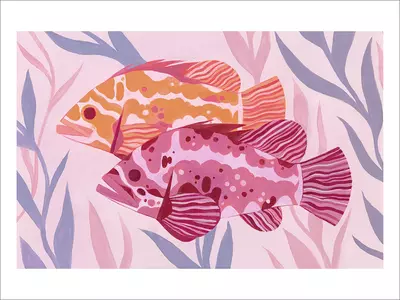
Rockfish 2 (PRINT)
$30.00
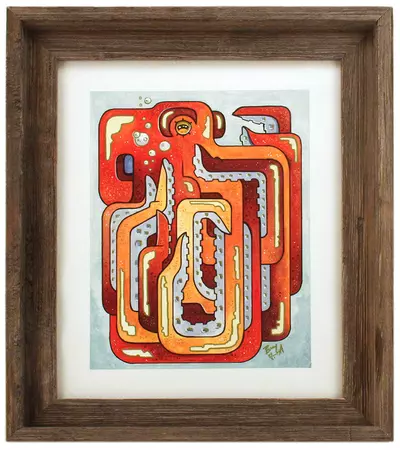
O is for Octopus
$750.00
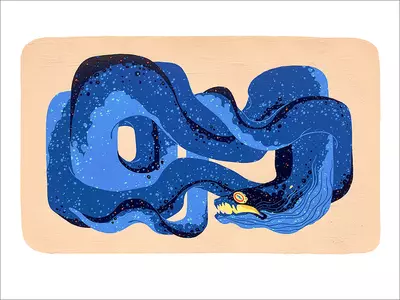
Moray Eel (PRINT)
$30.00

Rockfish 1
$400.00
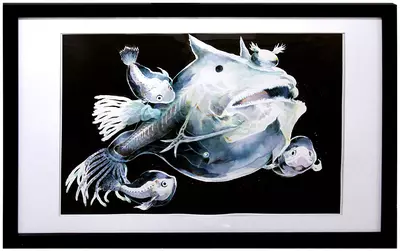
Ghostly Seadevil
$1,000.00

Weird to Exist: Simple Comics About Complex Emotions
$15.95

Rockfish 2
$500.00

Teacup Ride
$450.00
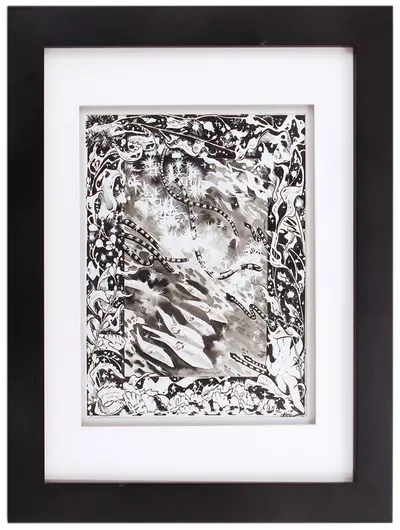
Dispersal
$350.00
![Carey [PRINT], Lorena Alvarez Gomez Carey [PRINT], Lorena Alvarez Gomez](https://84d70f39dda4f8d63311-09dac41207c435675bfd529a14211b5c.ssl.cf1.rackcdn.com/assets/attachments_p/000/085/206/size300_LorenaA_carey_web.webp)
Carey [PRINT]
$40.00

Symbiosis
$650.00
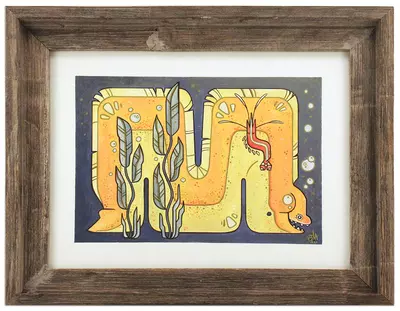
M is for Morray
$750.00

Into the Midnight Zone (PRINT)
$30.00



